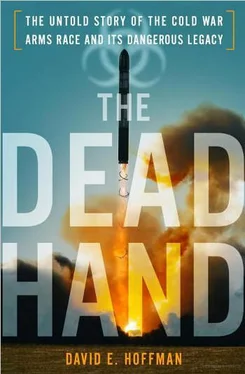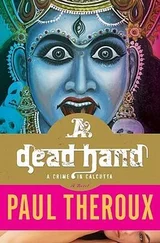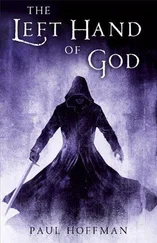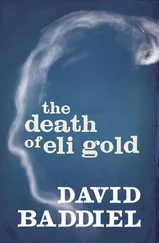Sandakhchiev was in a hurry. He wanted to push the frontiers of genetic engineering in biological weapons. The sprawling facility included special departments for every step: to develop and produce culture media; to grow cells for the production of viruses; to grow the viruses; to isolate and manipulate DNA; to isolate the necessary enzymes; to test the results on animals, and more. His institute did achieve some gains in civilian research, but at the core, it was a laboratory to discover new methods of using viruses to kill people on a massive scale.
After earning his doctorate at Novosibirsk State University in 1976, Popov became a junior scientist in the chemistry department at Vector. Chemistry was vital to unwrapping the secrets of genes. In the first year or two, he recalled, the scientists were given basic training in microbiology. They practiced growing viruses using harmless species variants, known as bacterial phages. In 1978, Popov was promoted to head of the chemistry department, and he began to learn the true goals Sandakhchiev had in mind. He got his clearance for access to top-secret information. “And at that point I became irreversibly involved in the biological weapons program.”
“So it was quite innocent,” he recalled. “They said, you are in the position of a department head, and you need to understand that in addition to academic research, we need to develop some military projects to defend our country.” Popov was prohibited from travel abroad without special permission. They asked him to sign a statement promising to keep the deepest secrets. “That was the beginning,” he said, “a very critical step. I committed myself. I signed the papers because there was no choice. Everybody was polite and nobody insisted, but I know very few people in my position who refused to cooperate. The refusal would be a kind of suicide, meaning the KGB would be after you for the rest of your life, and you would never get a decent job. I admire those people who had the courage to say ‘no.’ They were more mature than I was.”
Popov said he also had doubts about whether germs would ever be used in war, even as he became more deeply involved. “I never believed those weapons could ever be used. I always believed they would never be used, because it was so absurd, everything was so absurd and so self-destructive.” He said it would be “ridiculous” to use germs on a battlefield, the impact being so unpredictable. He added, “The only justification for me to be involved in this absurdity was that I was pushed… There was a popular saying that if they fire you, there will be just one place to find a job. It will be the Western Siberia Hat Company.” That was a metaphor for a humiliating dead end. At Koltsovo, by contrast, promising research challenges, facilities, and opportunity beckoned.
The KGB had a large presence at the institute, supervising documents, watching management, keeping an eye out for spies. Each employee went through a meticulous background check. Links to the outside world were forbidden, and contacts with foreigners rare. “And there was great, great suspicion regarding somebody who came from abroad,” Popov recalled. “The KGB instructed us how to deal with the visitor, the KGB assigned a special person to follow every step of that visitor, and everybody who contacted that visitor fell under the KGB’s suspicion, so it was a lot of trouble to even talk to the foreigner.” Some scientific articles from overseas journals were distributed, but general Western literature was prohibited. Suspicion was rife. Once, the scientific secretary of the institute was accused of reading literature about yoga, Popov recalled. “And also he had been noticed standing on his head. Head down, and legs up, and that was clearly unacceptable for a person in his position. Although he did it purely at his leisure at home, his abnormal behavior raised the suspicion that if he was capable of doing something like this, he could not be trusted. He was dismissed.”
The true purpose of Koltsovo was concealed with a “legend,” or cover story. “The so-called open legend provided to everybody was that the purpose of the institute was to push the development of industrial microbiology. And we wanted to know how to modify microbes, how to make them producers of different kinds of biological substances. It was a legitimate goal, which covered up the biological weapons program, because its purpose sounded exactly like the peaceful program. There was only one exception—those modified microbes had, ultimately, to be killers.”
Amid all the secrecy, Popov recognized a fault in the cover story. A normal institute of this size would be a source of dozens or hundreds of scientific papers in the professional journals. But Popov said scientists were severely restricted in what they could publish. Any paper had to say nothing about their real work, and fit the cover story. “It had to be a confusing, or misleading, or irrelevant story,” he said. The dearth of serious papers from a facility with thousands of research workers would be suspicious. If not making discoveries for science, what were they doing? But Popov was told by high-level officials that the United States had a hidden biological weapons program too, and he believed it. There was hardly any discussion of the 1972 treaty. “You know, the overall perception was that we were quite undeveloped, which was mainly true,” Popov said, reflecting on his thinking in those times. “We thought about ourselves as a country that needed to develop its own capability in terms of biological weapons. We feared being without them, and nobody essentially ever doubted that the Americans had the best biological weapons. And think about the predominant social mentality of the Soviets at that time. Who ever doubted that Americans were always cheating on us? Nobody did, simply because we always did—and expected others would be stupid not to behave in the same way.”
Viruses are extraordinarily small, submicroscopic particles, hundreds of times smaller than a grain of sand, that infect a biological organism and cause disease. They were first discovered by Dmitri Ivanovsky, a Russian microbiologist, in 1892, and six years later by Martinus Beijerinck, a Dutch microbiologist and botanist. Ivanovsky was trying to understand why tobacco mosaic disease, in the sap of tobacco plants, could not be captured by a porcelain filter that trapped bacteria. He realized that the disease particle was so small that it was passing through the filter. Viruses are barely life-forms, consisting of nothing more than a protein shell and bits of genetic material and sometimes a membrane. But they can be destroyers, carrying incredibly high virulence and contagiousness. They have caused smallpox and influenza epidemics. They work by infecting a host cell, then directing the cell to replicate and produce more viruses. Unlike bacteria, they cannot be treated with antibiotics.
Sandakhchiev’s dream was to build viral demons the world had never known—viruses that would attack troops or populations. But there were formidable hurdles to be overcome in this still-backward realm of Soviet science. The researchers had to learn to walk before they could run, and one of the early challenges was to synthesize genetic material, to make artificial DNA. At the time, methods were known in the West for creating simple genes, but the Soviet Union was still far behind. In the first six months of 1980, Sandakhchiev sent Popov on an extraordinary mission. Popov went to the University of Cambridge, England, to the famous Laboratory of Molecular Biology, a center of many of the world’s advances in microbiology, to absorb and copy the technology for DNA synthesis and bring it back. Travel abroad by a participant in the Soviet bioweapons program was highly unusual, and Popov’s trip had to be approved by the Central Committee of the Communist Party in Moscow. Popov went alone, without his family, posing as a civilian researcher for six months, studying intensively, and returned to Koltsovo with the know-how. He also had been given a glimpse of life in the West—something he never forgot. 4
Читать дальше












